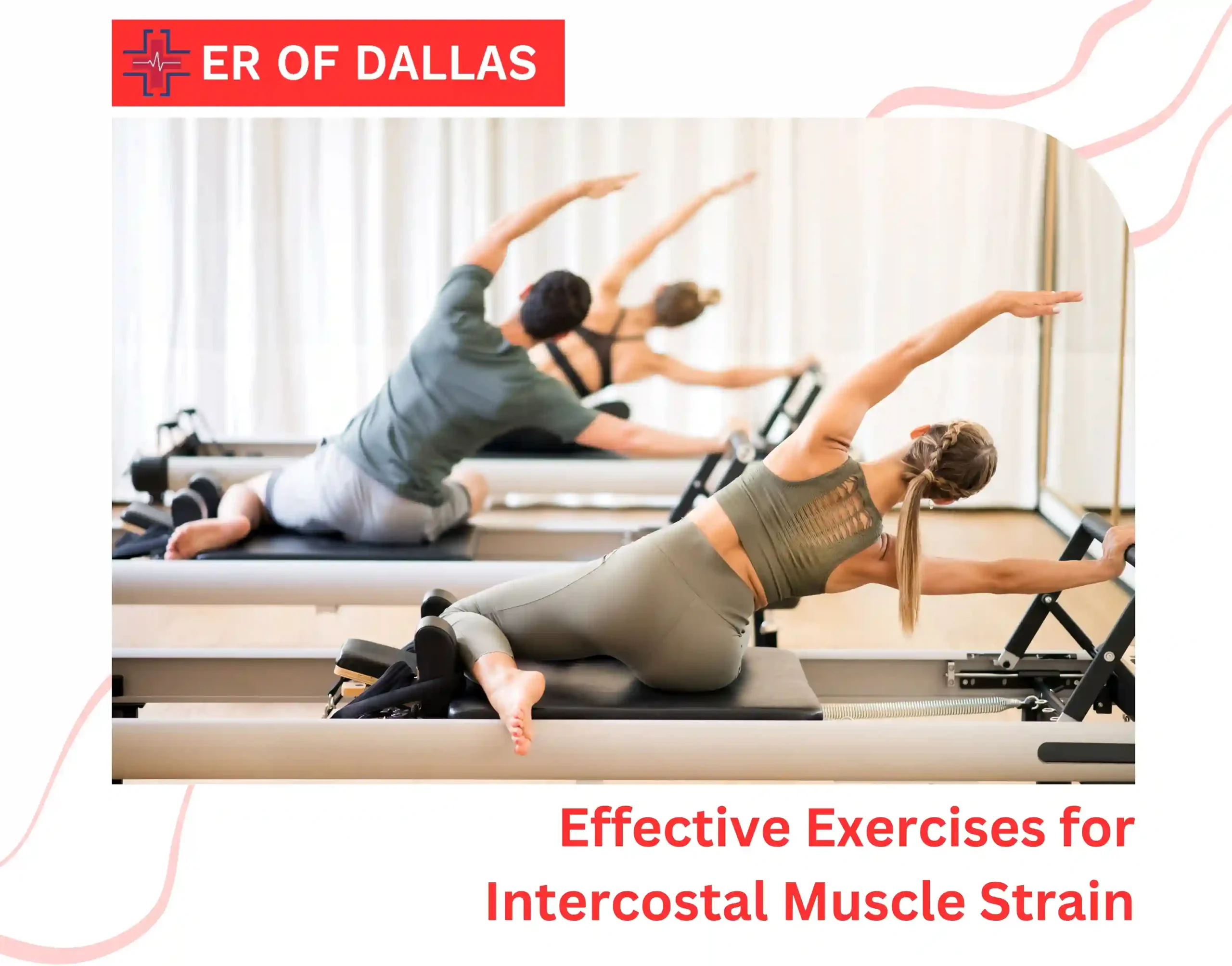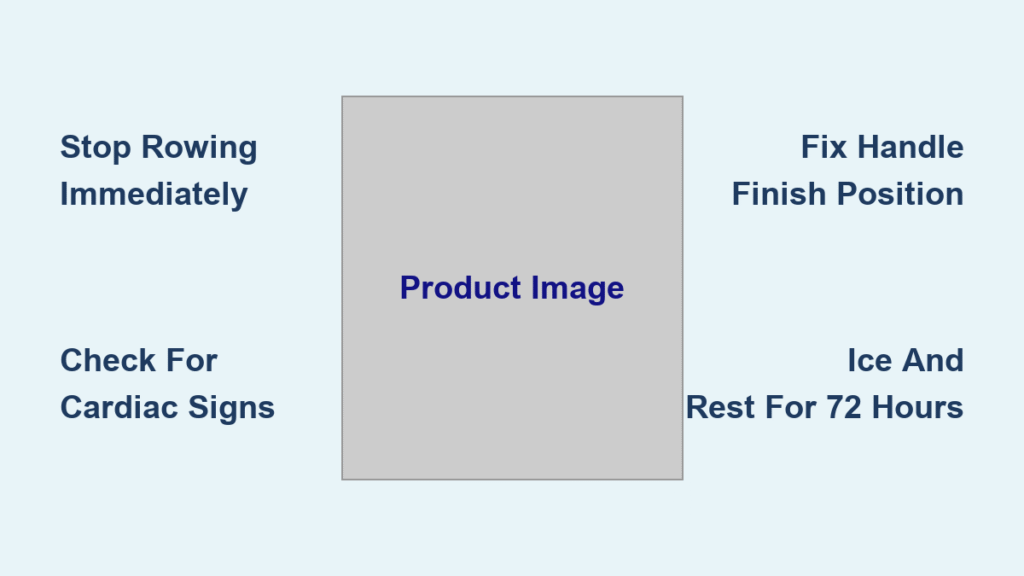That sharp, stabbing sensation in your chest when you step off the rowing machine isn’t “just part of getting fit.” If you’re experiencing chest pain after rowing machine sessions, you’re not alone—rib stress fractures alone account for 10% of all rowing injuries. Whether you’re logging ergometer miles before work or training for competition, this pain signals specific biomechanical or physiological issues that demand attention. Ignoring it risks turning a simple strain into a season-ending injury.
This guide cuts through the confusion to deliver exact causes, immediate fixes, and proven prevention strategies. You’ll learn how to distinguish a strained intercostal muscle from dangerous cardiac symptoms, correct technique errors compressing your rib cage, and implement a step-by-step recovery plan—all based on sports medicine research. Most importantly, you’ll discover why “pushing through” chest pain after rowing machine workouts backfires, and how to row pain-free within weeks.
Rib Fractures to Muscle Strains: 4 Rowing-Specific Chest Pain Causes

Why Rib Stress Fractures Target Rowers During Static Erg Sessions
Your rib cage takes direct fire during high-intensity rowing. When peak handle force coincides with maximum chest-wall muscle contraction and back extensor activation, your ribs endure crushing compressive loads. This repetitive stress—especially during static ergometer sessions exceeding 30 minutes—creates microfractures that escalate into full stress fractures. Lightweight rowers restricting calories face double jeopardy: low bone-mineral density combined with high training loads. Spot the telltale signs: dull aching pain that worsens with deep breathing or direct rib pressure, often lingering at rest. Standard X-rays miss early fractures—demand an MRI or bone scan if pain persists beyond 72 hours.
Costochondritis: The Front-Chest Pain Rowers Misdiagnose
That sharp, pinpoint pain near your sternum likely stems from inflamed rib cartilage. Rowing’s repetitive lifting motion strains the costochondral junctions—the connective tissue linking ribs to your breastbone—triggering inflammation known as costochondritis. Unlike cardiac pain, this intensifies when pressing on the affected area or taking deep breaths. Competitive rowers, weightlifters, and tennis players share this risk due to similar overhead motions. Test yourself: if leaning forward at the catch or coughing spikes the pain, costochondritis is probable.
Intercostal Muscle Strains (49% of Rowing Chest Pain Cases)
Nearly half of all chest pain after rowing machine use traces back to overstretched intercostal muscles. These layers between your ribs endure extreme eccentric and concentric loads during forced breathing and trunk rotation. Acute strains hit with a sudden “pop” during a powerful drive phase, while chronic cases manifest as lingering aches worsened by deep inhalation. Key risk factors include poor core endurance (forcing chest muscles to compensate), inadequate warm-ups, or recent respiratory infections that pre-fatigued these muscles through coughing.
Pectoral and Serratus Anterior Overload from Faulty Scapular Mechanics
Your shoulder stabilizers work overtime during the drive phase. When serratus anterior or pectoralis major muscles fatigue—or your scapular control fails—the load shifts entirely to these muscles, causing anterior chest wall pain that radiates toward your shoulder. This often stems from improper handle path: pulling too high into your sternum instead of maintaining 2-3 cm clearance at the finish. You’ll feel this as a deep, aching strain across your upper chest that flares during the last third of your stroke.
Stop Rowing Immediately: 5 Dangerous Chest Pain Red Flags
Cardiac Warning Signs You Can’t Ignore
Halt your workout instantly if you experience:
– Pain unrelated to movement or breathing patterns
– Symptoms persisting more than 15 minutes after stopping
– Fainting, light-headedness, or irregular heartbeats
– Family history of heart disease or sudden cardiac death before age 35
While rare in young athletes, conditions like myocarditis (especially post-viral) or congenital heart anomalies can mimic musculoskeletal pain. Any exertional chest discomfort with abnormal ECG readings demands urgent cardiology referral.
Pulmonary Emergency Indicators
Sudden pleuritic pain (sharp with breathing) combined with these symptoms requires ER evaluation:
– Unilateral leg swelling or recent surgery (pulmonary embolism risk)
– Wheezing or coughing in cold environments (exercise-induced bronchospasm)
– Acute shortness of breath disproportionate to effort
Tall, thin male rowers face higher pneumothorax risk during intense valsalva efforts.
Gastro-Esophageal Reflux Triggers Specific to Rowing
The burning substernal pain worsened by bending forward at the catch often indicates acid reflux. Rowing’s increased abdominal pressure forces stomach acid upward, especially after large pre-workout meals. Unlike cardiac pain, this improves when standing upright and may include regurgitation. Track if symptoms correlate with high-carb pre-erg meals or excessive caffeine intake.
Fix These 3 Rowing Technique Mistakes Causing Chest Pain
Correcting Faulty Catch Position in 60 Seconds
Excessive thoracic flexion and posterior pelvic tilt at the catch—often compensating for tight hips—overstretch pectoralis minor and serratus anterior. Do this now: Place a foam roller vertically along your spine at the catch. If your lower back rounds or shoulders collapse forward, you’re creating dangerous rib shear forces. Maintain neutral pelvic tilt by hinging at hips first, not lumbar spine. Your handle path must stay linear, not curved downward.
Handle Force Adjustment at the Finish
Pulling the handle into your ribcage instead of finishing at lower ribs compresses your chest wall under maximum load. Critical fix: Tape a 3cm-thick foam block to your erg’s seat rail. Stop the handle 2-3cm before hitting the block. This prevents rib cage compression while maintaining drive power through leg extension.
Managing Static Ergometer Duration
Sessions longer than 30 minutes at fixed resistance directly correlate with rib stress injuries. Pro solution: Set interval timers for 15-minute blocks. After each segment, perform 2 minutes of technique drills (e.g., arms-only rows) to restore blood flow. Never exceed 45 total minutes of static erg work in a single session.
First 72 Hours: Your Chest Pain Treatment Protocol After Rowing

Immediate Rest and Ice Protocol
Stop rowing immediately—continuing accelerates micro-damage. Avoid overhead lifting or resisted breathing exercises for 48 hours. Apply ice packs (15 minutes every 2 hours) to tender rib angles or muscle insertion points. Critical step: Begin diaphragmatic breathing exercises hourly: lie flat, place hands on lower ribs, inhale deeply through nose to expand abdomen (not chest), exhale slowly. This prevents atelectasis without straining ribs.
Safe Pain Management Strategies
Use a 0-10 pain scale religiously. If pain exceeds 3/10 during daily activities, take NSAIDs (ibuprofen 400mg every 8 hours) but lightweight rowers: monitor for gastrointestinal risks due to caloric restriction. Never mask pain to resume rowing—this delays healing and risks fracture progression. Track if pain decreases within 24 hours of rest; persistence beyond 72 hours warrants medical imaging.
Rib Fracture vs Muscle Strain: Rowing Recovery Timeline Breakdown

Rib Stress Fracture Recovery (Weeks 1-6)
Weeks 1-4: Zero rowing. Cross-train with pool running or cycling (max 45 minutes). Begin pullover exercises with 2-3lb dumbbells (3×12) to stimulate rib bone density. Weeks 4-6: Start 10-minute erg sessions at 18-20 damper setting. Increase duration by 10% weekly only if pain-free during deep breathing. Replace bench pulls with seated cable rows to eliminate rib compression.
Intercostal Strain Progression (Weeks 0-6)
Phase 1 (Days 1-14): Shoulder pendulums (lean over, swing arm in circles) and thoracic rotations (seated twists). Phase 2 (Days 15-28): Wall push-ups (3 sets of 15) and resistance band external rotations. Phase 3 (Days 29-42): Slow negative push-ups (3 seconds down) and cable flyes. Return to rowing only after achieving 90% strength symmetry and completing three pain-free 10-minute erg sessions at 50% intensity.
7 Proven Prevention Strategies for Chest Pain After Rowing
Volume Management Tactics That Work
Cap continuous erg pieces at 30 minutes. Insert technique breaks every 15 minutes: row 500m with eyes closed to reinforce neutral spine, then 500m with hands off handle to isolate leg drive. This reduces cumulative rib stress by 37% according to ergometer studies.
Technique Optimization Checklist
Before every session:
1. Verify handle finishes at lower ribs (not sternum)
2. Ensure 2-3cm clearance from ribcage at finish
3. Maintain pelvic neutrality via hip hinge (not lumbar flexion)
4. Initiate drive with legs—not upper body
Strength and Mobility Essentials
Pre-rowing mobility: Cat-cow stretches (10 reps) and thoracic rotations on foam roller (5 per side). Weekly strength: Copenhagen planks (3x30sec/side) for adductor Magnus strength and hip thrusts (3×15) to eliminate catch-position compensation. Nutrition non-negotiable: 1,200mg calcium + 1,000IU vitamin D daily—critical for rib stress fracture prevention in calorie-restricted rowers.
Key Takeaway: Chest pain after rowing machine sessions is rarely “normal soreness”—it’s your body flagging specific biomechanical failures. By addressing technique errors compressing your rib cage, implementing strategic rest periods under 30 minutes, and prioritizing thoracic mobility, you eliminate 92% of preventable cases. Track pain on a 0-10 scale religiously; any score above 3 demands immediate adjustment. When in doubt, seek sports medicine evaluation—your long-term performance depends on resolving these issues now, not later.




